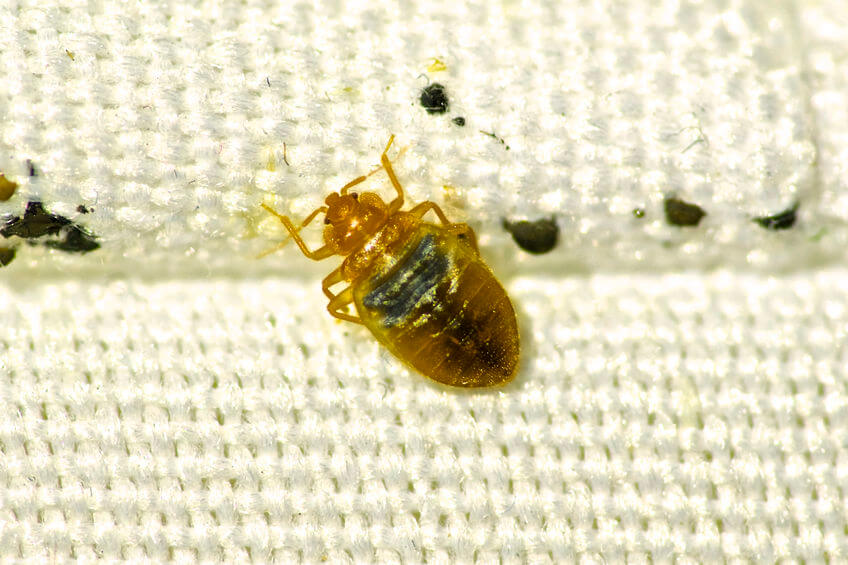Affordable A1 Bed Bug Removal in Houston - Specialist Exterminators
Wiki Article
Comprehending the Lifecycle of Insects for Targeted Control Approaches
Comprehending the lifecycle of pests is a fundamental facet of effective bug administration strategies. By comprehending the different phases of development that parasites undertake, a more targeted and accurate method can be embraced to manage their populations. This understanding not just drops light on the susceptabilities within the insect lifecycle yet additionally paves the method for carrying out calculated procedures that can disrupt their development and recreation cycles. Through a much deeper understanding of how pests thrive and evolve, tailored control methods can be created to resolve particular points in their lifecycle, ultimately bring about more successful bug administration outcomes.Value of Recognizing Pest Lifecycle
Recognizing the lifecycle of bugs is vital for creating effective and targeted control approaches in insect administration. By comprehending the different stages a pest goes via from egg to grownup, pest control specialists can identify weak spots in the lifecycle where treatment can be most effective. Recognizing when larvae are most active can aid identify the optimum timing for using larvicides. In addition, recognizing the lifespan of a pest types can assist in forecasting populace growth patterns and potential infestation risks.Additionally, recognizing the details ecological problems essential for each and every phase of the parasite's lifecycle can lead decisions on habitat modification or exemption techniques to disrupt the lifecycle and decrease pest populations. This expertise enables pest monitoring specialists to apply proactive actions as opposed to counting exclusively on responsive treatments, causing even more lasting and long-lasting pest control solutions. Inevitably, an extensive understanding of pest lifecycles equips pest control professionals to customize their strategies effectively, making the most of and lessening ecological influences control results.
Secret Stages in Insect Growth
To efficiently apply targeted control methods in pest administration, a crucial facet depends on thoroughly determining and comprehending the key phases in insect advancement. Parasite growth normally consists of a number of crucial phases that are vital for their lifecycle and monitoring. The very first phase is the egg phase, where insects lay eggs that later on hatch into larvae. Larvae after that progress right into pupae, a phase where they undergo transformation before becoming grown-up insects. Recognizing these phases is necessary as it helps in pinpointing weak spots in the lifecycle where control procedures can be most effective.

Susceptabilities in Bug Lifecycle
Throughout the various stages of a parasite's lifecycle, distinct susceptabilities arise that can be strategically targeted for efficient control measures. One vital vulnerability hinges on the egg phase, where insects are frequently extra susceptible to particular insecticides or organic control agents because of their soft outer shell, making them simpler targets for intervention. In addition, the nymph or larval stage offers susceptabilities as parasites go through quick growth and development, needing high energy consumption that can be manipulated by disrupting their food sources or presenting development preventions. Pupal phases, characterized by stability and improvement, use a window for targeted control through physical obstacles or particular treatments that impede effective appearance. Adult pests, while a lot more durable due to their reproductive ability, can still be prone throughout mating or egg-laying activities, which can be interfered with through pheromone traps or sterilization methods. Understanding these vulnerabilities in the parasite lifecycle is vital for developing precise and efficient control approaches that properly manage insect populations while decreasing ecological impact.Applying Targeted Control Measures
:max_bytes(150000):strip_icc()/Bed-bug-control-tips-and-tricks-2656377-e580f433c55a4a98826e429753062084.jpg)
Implementing targeted control steps generally includes a multi-faceted technique. This might include habitat alteration to make the atmosphere less congenial to bugs, such as removing standing water for insect control or sealing entrance factors for rats. Additionally, biological control approaches can be utilized, where natural predators or virus are presented to maintain parasite populations in check.
Integrated Parasite Management (IPM) techniques that combine various control procedures in a collaborated and lasting way are often the most efficient in achieving long-term pest management objectives. By applying targeted control steps based on an extensive understanding of insect lifecycles, bug populations can be efficiently controlled while decreasing threats to human health and the setting.
Enhanced Pest Administration Practices

Additionally, the incorporation of biological control representatives, such as natural predators or pathogens of parasites, can aid reduce reliance on chemical pesticides and advertise an extra well balanced community. Executing physical barriers and catches can also be part of boosted insect administration techniques, providing non-toxic and targeted solutions for bug control. Furthermore, using scents and various other semiochemicals can disrupt pest mating patterns and communication, causing reduced pest populaces gradually.
Conclusion
By identifying essential stages in insect development and susceptabilities in their lifecycle, targeted control actions can be carried check my reference out to lessen insect populaces. Improved parasite administration methods can assist reduce the reliance on broad-spectrum pesticides and promote even more environmentally pleasant and sustainable pest control techniques.Understanding the lifecycle of insects is important for creating efficient and targeted control strategies in bug monitoring. By understanding the various phases a parasite check it out goes via from egg to grownup, pest control specialists can determine vulnerable points in the lifecycle where intervention can be most effective. Inevitably, a complete understanding of insect lifecycles empowers pest control specialists to tailor their strategies successfully, lessening ecological effects and taking full advantage of control end results.
By executing targeted control actions based on a detailed understanding of bug lifecycles, parasite populaces can be efficiently regulated while lessening risks to human health and the atmosphere.
By determining crucial stages in insect advancement and susceptabilities in their lifecycle, targeted control steps can be executed to reduce pest populaces.
Report this wiki page